Winter Sowing
How I get a jump start on my summer flower garden
Thanks to the University of Maryland/Maryland Grows this informative article about winter sowing.

Winter sowing is a technique gardeners can use to start growing seeds outdoors during the winter months. If you have limited space for starting seeds indoors,winter sowing might be an option for you, depending on what you want to grow.
I first tried winter sowing last year with several types of flower seeds. Winter sowing works best for plants that are cold tolerant or even require a period of cold in order to germinate. When you are looking at seed descriptions, look for words like “cold tolerant,” “cool season”, “hardy annual,” “perennial”, “sow in autumn”, “sow in early spring”, or “self-sows”. These words indicate the best candidates for winter sowing.
This is not a good method to use now with heat-loving crops such as tomatoes, peppers, squash, and basil. Wait until spring for those.
I started seeds in January and February last year with this method and successfully grew several types of cool-season flowers: delphiniums, poppies, snapdragons, bachelor buttons, and Canterbury bells.
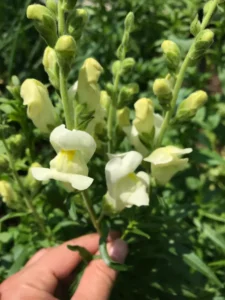
Here are the basic steps to winter sowing:
- Reclaim from your recycling bin clear or transparent plastic containers such as 1-gallon milk jugs and 2-liter soda bottles.
- Cut jugs and bottles three-quarters of the way around to create a hinged opening.
- Puncture holes in the bottom of the container to allow for good drainage.
- Fill the bottom of the container with purchased potting soil. (Avoid using home compost or garden soil; it might contain weed seeds.) Water thoroughly and let the water drain through.
- Plant your seeds according to the package instructions, one type of seed in each container.
- Close up the container securely with strong tape, such as packing tape. Label the container with the name of your seeds and the planting date.
- Leave the cap off of the bottles and jugs to allow for air circulation and water entry.
- Set your container in a sunny location outside. Then wait!
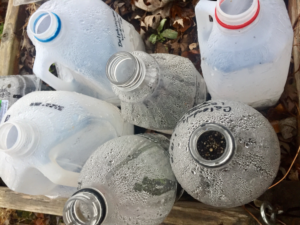
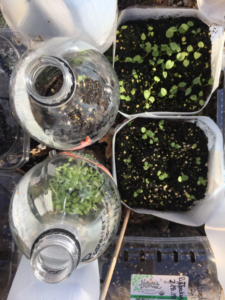
You’re essentially creating a small cloche that provides a protected environment for the seeds. The natural freezing and thawing process loosens the seed coats to aid in germination. Your seeds will sprout when the temperatures and daylight are ideal for them, and then you can transplant your seedlings into their permanent location in the garden when the soil is workable in early spring. There is no need to harden off the seedlings since they already will be acclimated to the outdoors.
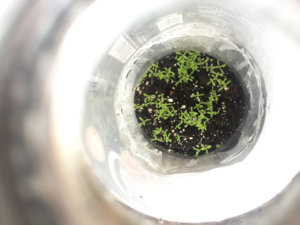
A note about watering: You will see condensation form on the inside of your containers on sunny days when the temperature is above freezing. This moisture trickles down to keep the soil medium consistently moist. Water (and even snow!) will enter the small opening(s) at the top of your container. If you do not see condensation forming on warm days, open the container and check the soil. You may need to add more water periodically.
If flower growing isn’t your thing, you can try the winter sowing method with cool-season vegetables such as kale, cabbage, Swiss chard, and leeks. But I would encourage you to add a few flowers too, for your pollinators!
Winter sowing is a fun way to experiment and get a jump start on your garden, even when the last frost is still months away.
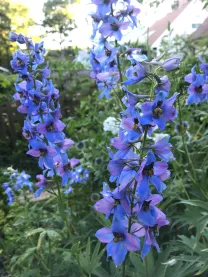
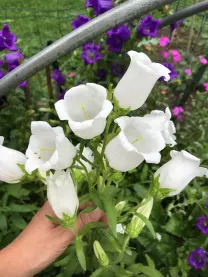
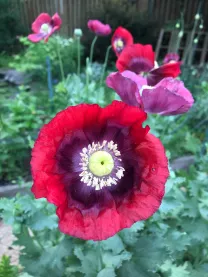
Additional Resources:
- Winter Sowers Facebook Group | By Trudi Davidoff, creator of the winter sowing method
- All the Dirt on Winter Sowing | 24-minute webinar by University of Maryland Extension Charles County Master Gardeners
- Starting Seeds in Winter| Penn State Extension
- What is Winter Sowing? | University of Illinois Extension Master Gardeners
- Cool Flowers by Lisa Mason Ziegler
By Christa K. Carignan, Maryland Certified Professional Horticulturist, Coordinator, University of Maryland Extension Home & Garden Information Center (revised 12/13/21)
If you are looking to buy or sell your home (with or without a garden), contact Gigi today. Oh by the way, I’m never too busy for any of your referrals!





Recent Comments